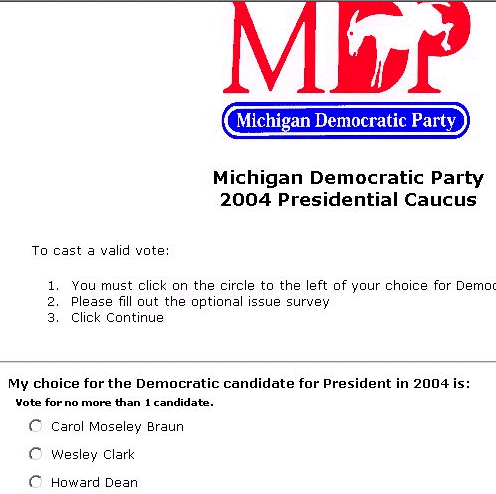
The process went like this:
-- First, you had to apply online to participate in the caucus.
-- Then, the Michigan Democratic party mailed instructions on how to vote online or by mail. The instructions included an assigned ID and password to use.
-- Then, you voted online or mailed in your ballot at the date of your choosing.
-- If you decided you'd rather vote in person the day of the physical caucus polling, you could do that; however, voting in more than one mode of polling was disallowed.
Here are screen shots of the actual Web voting process. At the very beginning there was a glitch: I went to the site without the https prefix; the party had secured the site through SSL, but failed to redirect an http request on port 80 to the SSL version of the home page. (Besides, it's not necessary to secure the login page, only the pages that take confidential information.)
There were some problems, though...
A friend who worked one caucus site tells me that a large number of people -- about 10% of those who voted that day -- had tried to vote over the Internet, but couldn't. So they fell back to voting in person.
Previously, news reports indicated that some 12,000 ballot requests for Internet (or mail) voting were denied due to subtle mismatches between name or address information and the official data from the Michigan Secretary of State.
In Detroit, a number of caucus sites were closed or moved the day of the voting. The party ordered voting in Detroit to continue until 8:00 pm, while in the rest of the state those who showed up to vote after the announced 4:00 pm closing were told "Nope."
All lot of out-of-state experts fretted about hacking; the real problems had to do with getting trains to run on time, not train robbers.